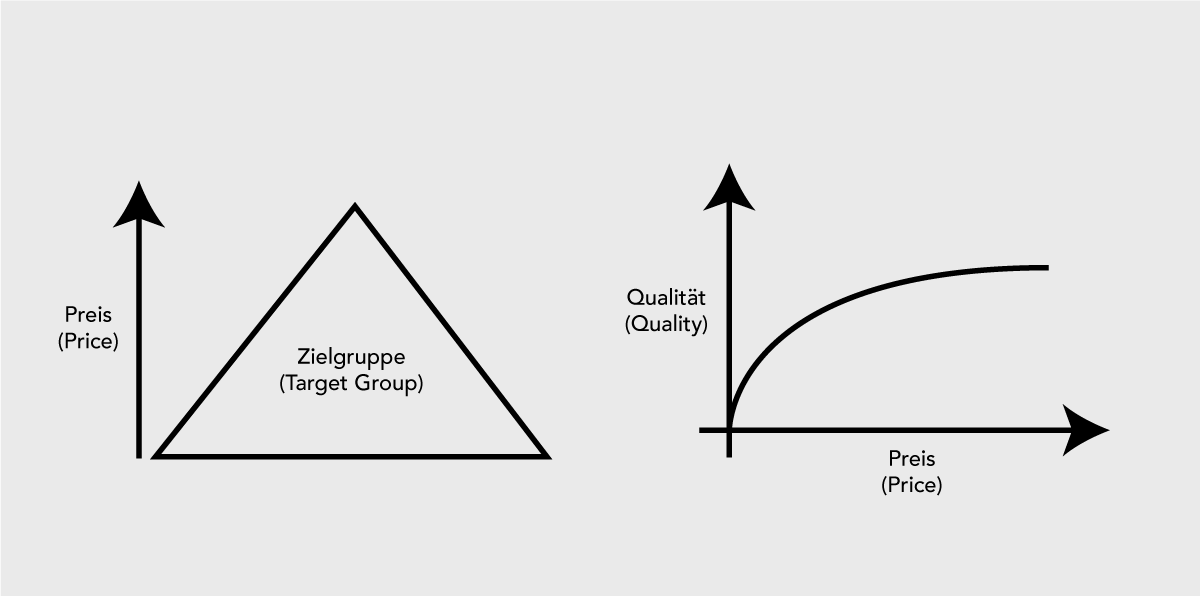Brands, visions and prices
As beautiful as the vision of a comprehensively sustainable textile industry may be, at the end of the day it is embedded in a systems that makes money and, above all, spends it.
A certain amount of monetary resources must be available for this, which we earn through the selling of our products. Of course, the price plays a decisive role. There are different approaches to pricing and it isn’t uncommon for them to determine the majority of the perception of an entire brand.
Let's start at the bottom: The lowest prices can only be achieved if savings are made everywhere. This primarily concerns the quality of a product, but also social and ecological losses. This is about mass production for an oversized mass market – emotions in the form of brand reference or sustainability are completely excluded. At the other extreme are high-priced luxury items aimed at a small, selected clientele. Here, the exclusivity of the brand is also created quite simply by the high price. The quality is usually better (which, by the way, does not always mean better production conditions), but of course not to the same extent as the difference in prices. It is not news that there is no world between the production price for low and high quality, but there are between the retail prices. Many brands, like us, are in the middle of the field – in terms of price.
The margins (the difference between production and sales price) flow primarily into marketing and sales: For higher prices you have to do more nowadays in order to win customers. It doesn’t matter whether this is imaginary, i.e. a desire could be created through clever campaigns, or whether the added value is that a piece of clothing simply fulfills its function at the lowest possible price. So it is a question of business philosophy to whom I would like to recommend my products, because prices are closely linked to target groups. So I could offer a T-shirt like the one we have in the program for 50 euros, calculate 30 Euros for dealers and sales, a few Euros for marketing and an appropriately photo shoot, and then estimate half of it for a 40% sale to sell it. A classic calculation that is also standard for some ‘sustainable’ brands. (At this point it must therefore be mentioned briefly that we also have a lot going on in the sale at times. Unfortunately, this has always been due to different circumstances: Goods only available at the wrong time, being saddled with goods due to Corona, getting rid of remaining stocks to maintaining liquidity. With the help of our pre-orders, we try to better predict future requirements. For us, this means: planning security and avoiding discount battles.)
With this information in mind, I would like to briefly introduce our idea, because obviously we have other plans. We aim to reach as many people as possible with our vision and our products, because even if you are generally skeptical about consumption, you sometimes need new clothes. Since we are so self-confident to claim that our approach to developing products, using materials and taking them back is better for people and nature than for others, the specific goal is therefore: Better buy from us than anywhere else! ;)
At the moment we’re of course still small, but growing. The bigger we get, the more the sale of the products will pay off and the more money we will have at our disposal. However, we don’t want to buy big SUVs from them, but rather become even cheaper in order to have even more impact and to show that sustainable consumption is not only possible with a large budget and for high-income earner. We can’t yet imagine that Manitober will become a ’mass product’, but we would welcome it.
So there will probably never be big profits with us, but fair fashion for everyone – and that’s our vision!
